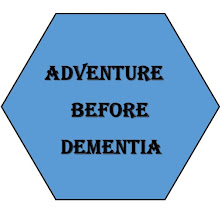AUSTRALIA is the world's sixth largest country, about the size of the continental United States. It is the smallest continent and the largest island. It is the lowest, flattest and second driest of the continents (Antarctica is drier!). And, it is very old - geologically, Australia's landscape can be aged in the billions of years. There has been little volcanic activity and earthquakes are rare. The northern tip of Australia, Cape York, is equivalent to Costa Rica in the northern hemisphere. The most southerly point, South East Cape in Tasmania, is similar in climate to Boston.
The country's original inhabitants probably arrived about 50,000 years ago - these Aboriginal people spread throughout the country over the next 30,000 years. After Captain Cook's first voyage, Britain decided that Australia would make an ideal penal colony for many of the inmates of Britain's overcrowded prisons. The first convicts arrived in 1788 and there followed a fifty year period when settlements were established around the coastline, large tracts of land were settled by sheep and cattle ranchers, and convicts helped free settlers get rich.
The "Convict Period" of Australian history came to an end with the discovery of gold. In 1852, when the last convicts arrived in eastern Australia, a total of 168,000 had been delivered to this country. In 1901, the colonies, which had all become autonomous states, came together to create a unified federation which was a member of the British Commonwealth, with the Queen as head of state. The new nation flourished and more than 5 million people migrated to Australia in the latter half of the 20th century. Today 1 in 5 Australians were born overseas and 22% of these are from Asian countries. The links with Britain, the mother country, has slowly eroded with this change in population base and within the next few years, Australia may complete its journey and become a free-standing republic with its own head of state.
Unlike its predominantly flat and dry neighbor, NEW ZEALAND has mountains, lakes, fjords, hills, plains, beaches, rivers and rainforests all in a relatively small area. New Zealand broke away from an ancient super-continent before the evolution of mammals; as a result, this island country had only birds when the first humans arrived 1000 years ago. All mammals (e.g., rabbits, possums, dogs, rats, ferrets, weasels) arrived in the past 200 years, since the arrival of white Europeans. These predators, plus over-hunting by the Maoris have wiped out 17 of 84 native birds; many of those remaining are endangered. Thanks to white European loggers, 80% of native trees have been destroyed as well.
New Zealand covers an area of 104,000 square miles, about the size of Colorado, divided into two main islands and smaller outlying islands so scattered that they range from tropical to antarctic. Three-fourths of the country is rolling hills and mountains, but to the south, fjords carved by ice are among the most spectacular in the world. The climate is temperate, but heavily influenced by the surrounding seas - it's not uncommon to experience all four seasons in one day. The west coast of the South Island is one of the wettest places on earth, with over 20 feet of rain falling every year.
The first settlers, the Maori began to arrive in New Zealand about 700 years ago. Travelling from Polynesia, the Maori established a nomadic hunter-gatherer society and quickly spread over much of New Zealand. The food supply of plump, flightless birds made life easy until 200 years of hunting made the giant Moa and many other flightless birds extinct. The Maori then turned to farming and fighting among tribes for land ownership. Captain Cook first landed here in 1769, and by the late 1700's, exploration, exploitation and colonization of New Zealand was in full force. The impact of these visitors was catastrophic on the traditional Maori way of life - between European diseases and firearms, their population was decimated. Today about 15% of New Zealand's 4 million people claim Maori descent, and the government has worked hard to restore Maori lands and absorb Maori culture into mainstream life.
Blog Archive
-
▼
2009
(37)
-
▼
October
(37)
- G'day, mates! We’re off on our biggest and longest...
- TWO COUNTRIES A WORLD AWAY ...
- Friday, October 30, 2009
- Saturday, October 31, 2009
- Sunday, November 1, 2009
- Monday, November 2, 2009
- Tuesday, November 3, 2009
- Wednesday, November 4, 2009
- Thursday, November 5, 2009
- Friday, November 6, 2009
- Saturday, November 7, 2009
- Sunday, November 8, 2009
- Monday, November 9, 2009
- Tuesday, November 10, 2009
- Wednesday, November 11, 2009
- Thursday, November 12, 2009
- Friday, November 13, 2009
- Saturday, November 14, 2009
- Sunday, November 15, 2009
- Monday, November 16, 2009
- Tuesday, November 17, 2009
- Wednesday, November 18, 2009
- Thursday, November 19, 2009
- Friday, November 20, 2009
- Saturday, November 21, 2009
- Sunday, November 22, 2009
- Monday, November 23, 2009
- Tuesday, November 24, 2009
- Wednesday, November 25, 2009
- Thursday,November 26, 2009
- Friday, November 27, 2009
- Saturday, November 28, 2009
- Sunday, November 29, 2009
- Monday, November 30, 2009
- Tuesday, December 1, 2009
- Wednesday, December 2, 2009
- Thursday, December 3, 2009
-
▼
October
(37)


